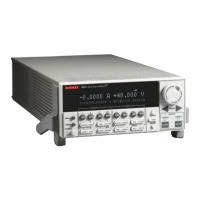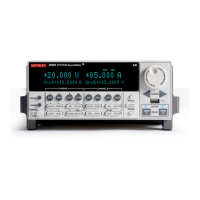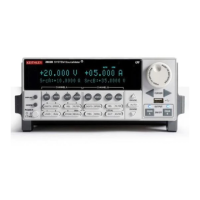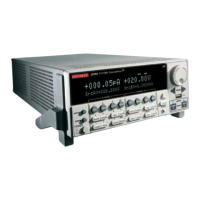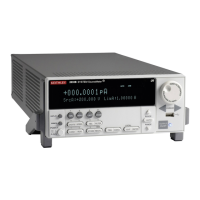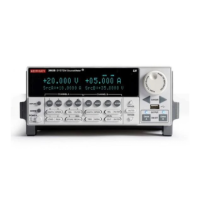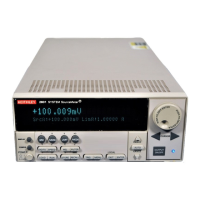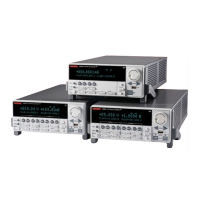5-5
SECTION 5
Using Substrate Bias
5.3.5 Modifying Program 12
For different sweeps, the variables for V
GS
start, V
GS
stop, and
V
GS
step values can be changed as required. For different sweep
lengths, array size and loop counter values must be adjusted
accordingly. You can also change the V
DS
value, if desired, by
modifying that parameter accordingly.
5.3.6 Program 13 Test Configuration
Figure 5-5 shows the test configuration for Program 13. Unit #1
is used to sweep V
GS
; Unit #2 sweeps V
DS
and measures I
D
. Unit
#3 applies a user-defined substrate bias to the device under test.
Common source characteristics are generated by data taken when
the program is run.
5.3.7 Example Program 13:
Common-Source Characteristics
with Source-Measure Unit
Substrate Bias
Program 13 demonstrates common-source characteristic test
pro gram ming with substrate bias. Follow these steps to use this
p r o g r a m .
With the power off, connect the dual-channel SourceMeter 1.
instrument to the IEEE-488 interface of the computer. Con-
nect the single-channel SourceMeter instrument to the dual-
channel master using a crossover Ethernet cable.
Connect the test fixture to both units using appropriate 2.
c a b l e s .
Turn on the instruments and allow the units to warm up for 3.
two hours for rated accuracy.
Configure the TSP-Link communications for each instrument.4.
Slave: A single-channel instrument such as the Model 2601,
2611, or 2635.
1. Press the MENU key to access MAIN MENU.
2. Select the COMMUNICATION menu. (Skip this step if the
Series 2600 instruments used have firmware Revision 1.4.0
or later installed.)
3. Select the TSPLINK_CFG menu. (If the Series 2600 instru-
ments used have firmware Revision 1.4.0 or later installed,
the menu name should be TSPLINK.)
4. Select the NODE menu.
5. Set the NODE number to 2 and press ENTER.
Master: A dual-channel instrument such as the Model 2602,
2612, or 2636.
1. Press the MENU key to access MAIN MENU.
2. Select the COMMUNICATION menu. (Skip this step if
the Series 2600 instruments used have firmware Revision
1.4.0 or later installed.)
3. Select the TSPLINK_CFG menu. (If the Series 2600
instruments used have firmware Revision 1.4.0 or later
installed, the menu name should be TSPLINK.)
4. Select the NODE menu.
5. Set the NODE number to 1 for the master and press
ENTER.

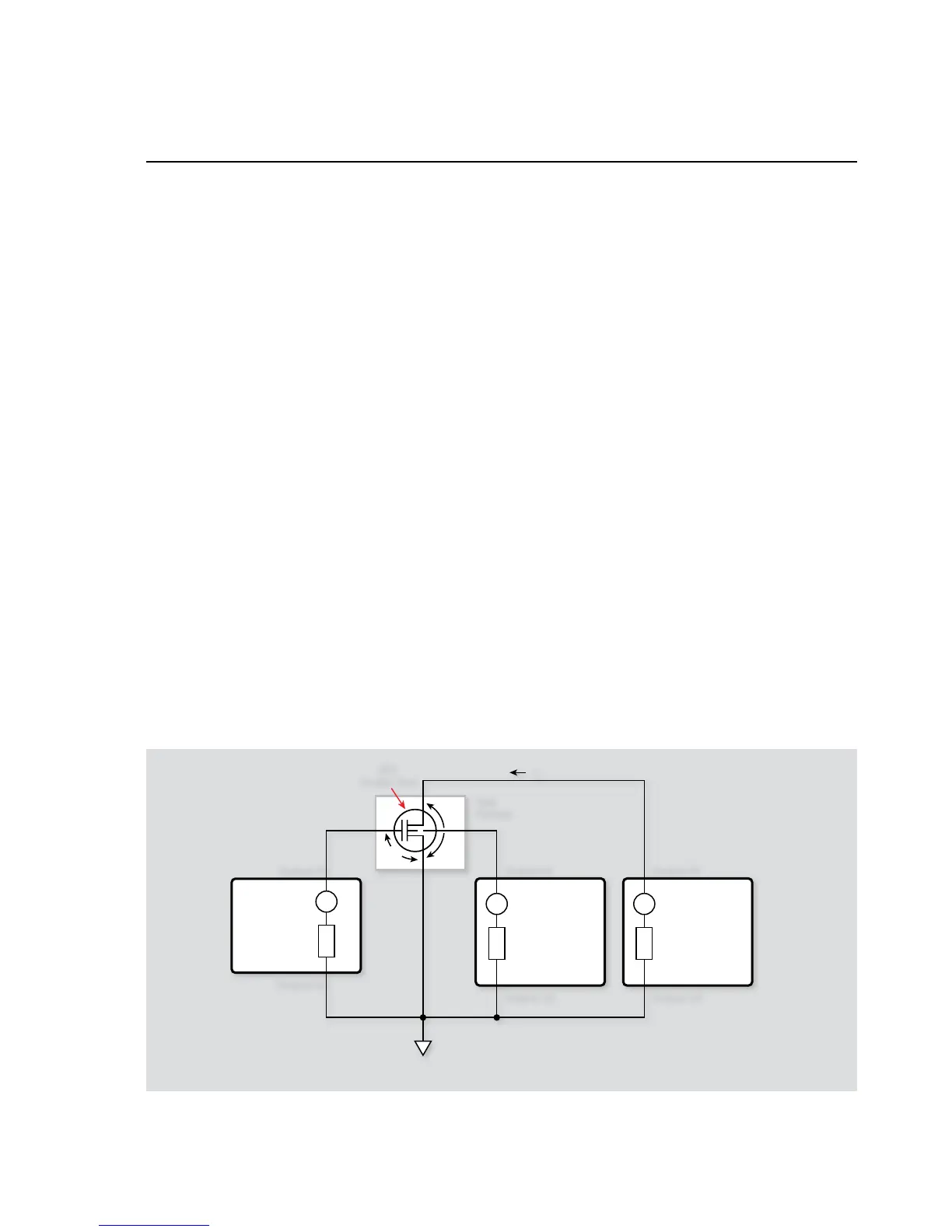